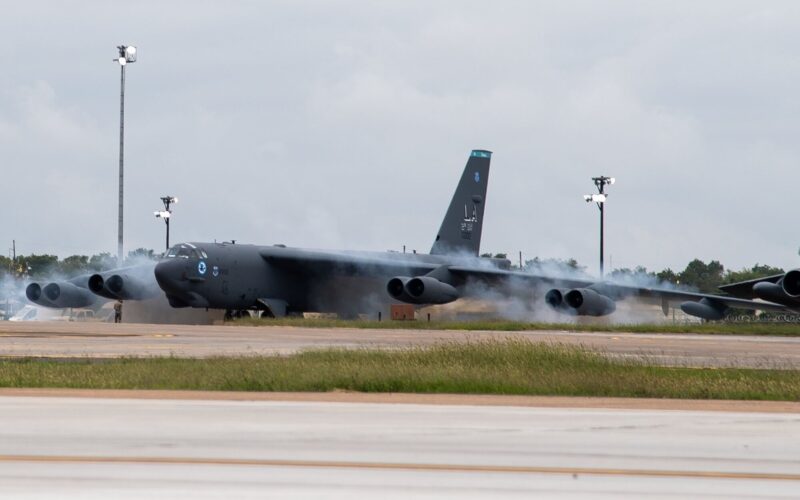Boeing selected a new auxiliary power unit (APU) manufactured by Honeywell to upgrade the B-52 strategic bomber.
Honeywell announced on October 27, 2022, that its GTCP 36-150 APUs would be integrated into the Auxiliary Starter Air Unit (ASAU) of the aircraft to start the jet engines before departure.
“The B-52 is one of the most enduring USAF aircraft ensuring force readiness against emerging threats,” said Dave Marinick, president of the Engines and Power Systems division at Honeywell Aerospace. “We are confident that our proven 36-150 APU will exceed the expectations of the USAF throughout the CERP contract and subsequent B-52 active-duty squadron service that will last until at least 2050.”
For now, the B-52 relies on aerospace ground equipment to start its engines. Alternatively, in an emergency situation, the USAF can use explosive gunpowder cartridges to quick-start some of the aircraft engines, with the remaining engines started by internal generator power while the bomber taxis to the end of the runway. This “Cart Start” reduces take-off time from one hour to ten minutes.
Modernizing the workhorse of US deterrence
The B-52 Stratofortress fleet is undergoing a modernization project called the Commercial Engine Replacement Program (CERP). The Rolls-Royce F130 engine was chosen to replace the Pratt & Whitney JT3D (also known as the TF33) currently powering the B-52H. L3Harris will upgrade the electronic warfare and radar system of the aircraft.
The Boeing B-52 Stratofortress is a long-range strategic bomber aircraft that entered service in 1955. The aircraft can carry weapon payloads of up to 70,000 pounds (32,000 kilograms) of either nuclear or precision-guided conventional ordnance, with an operating range of over 8,800 miles (14,080 kilometers).
The USAF currently operates 58 B-52H bombers in its fleet, assigned to the 5th Bomb Wing, the 2nd Bomb Wing, and the Air Force Reserve 307th Bomb Wing. The USAF expects to operate B-52s through 2050.

